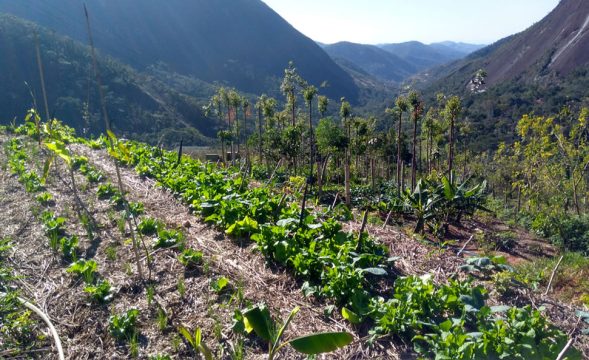29
Oct
Natural Areas Surrounding Farmland Critical to Reducing Pesticide Use

(Beyond Pesticides, October 29, 2020) Natural areas around farmlands play an important role in managing pest outbreaks and therefore reducing insecticide use, a new study published in the journal Ecology Letters finds. While industrial agriculture puts pressure on farmers to grow single crops on ever larger farms to achieve economies of scale, these monoculture landscapes have significant downsides for public health and the environment. “Overall, our results suggest that simplified landscapes increase vineyard pest outbreaks and escalate insecticide spray frequencies,” said lead author Daniel Paredes, PhD, to the Daily Democrat. “In contrast, vineyards surrounded by more productive habitats and more shrubland area are less likely to apply insecticides.”
To investigate the effect of nearby landscapes on farm pest pressure, the team of University of California, Davis scientists used a database created by the government of Spain. For 13 years, the government monitored 400 Spanish vineyards for the presence of the European Grapevine Moth. The moth is a notorious vineyard pest (discovered in California vineyards in 2009), laying three generations of eggs on grapes. In the first generation, the moth larvae will web and feed on flowers. In the second and third, they feed on berries, damaging harvests.
Scientists developed a model to determine how the surrounding landscape may have influenced recorded pest pressure, and farmer spray patterns.
Results show that pest outbreaks above levels that cause significant economic damage are much more likely when farms are surrounded by other vineyards. The effect was particularly pronounced with the second and third generation of moths, which cause the most widespread damage. “At harvest, we found pest outbreaks increased four-fold in simplified, vineyard-dominated landscapes compared to complex landscapes in which vineyards are surrounded by semi-natural habitats,” said Dr. Paredes.
Analysis found that farmers are more likely to apply insecticides if economic threshold levels are met, with use continuing to increase the longer time is spent over those thresholds. Thus, because landscape effects are driving pest outbreaks, they also lead to more frequent insecticide applications.
The researchers note that having such long-term comprehensive data is critical. That’s because pests populations can often be “stochastic,” or random, in the short-term, and only reveal accurate trends over a longer period of time. To show this, the researchers attempted to conduct the same modeling on a shorter time frame with a smaller number of farms, and found that the same association would not be discovered. Study co-author Jay Rosenheim, PhD, told the Daily Democrat that their research “shows how using really huge datasets — in this case generated by government employees working with farmers in Spain — can reveal how natural habitats surrounding agriculture can shape pest outbreaks and pesticide use in vineyards.”
While it is so much easier to think about and confront agricultural production in simple terms, simplicity is dangerous for ecology and the environment. The complex interplay between living communities and the natural landscape can help us put pests in check without outside chemical inputs. It fosters resiliency – when one component of the landscape is out of balance, in a complex system, another one is likely available to take its place. Simplified landscapes make the use of industrial machinery and chemical technologies easier, but are presupposed on a precarious foundation. Experience finds it is nearly impossible for the industrial model to replicate the ecosystem services a healthy landscape otherwise provides.
More and more data is showing that the crises we confront in the natural world are deeply interconnected. Habitat loss and fragmentation, and the increasing use of toxic pesticides both negatively reinforce each other, leading to an ecological death spiral and insect apocalypse.
A recent study on wild bumblebees reinforces the importance of this connection in regards to positive aspects (rather than negative aspects, like pests) in the environment that we want to foster. It found that both limited food sources and pesticide exposure alone stress bees, but the two in combination are additive, leading to significantly more harm when both negative environmental conditions are present.
“Habitat conservation thus represents an economically and environmentally sound approach for achieving sustainable grape production in Spain,” said study co-author Daniel Karp, PhD. The same is likely to apply well beyond Spain.
Help promote a system of agriculture that understands and accounts for complex systems. Organic agriculture is not perfect, but alongside other conservation measures represents a viable path to a food system that works with, rather than against nature. Learn more about the benefits of organic agriculture on Beyond Pesticides Why Organic program page.
All unattributed positions and opinions in this piece are those of Beyond Pesticides.
Source: Daily Democrat, Ecology Letters










